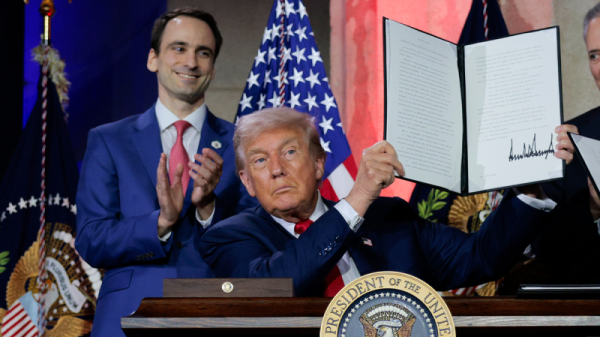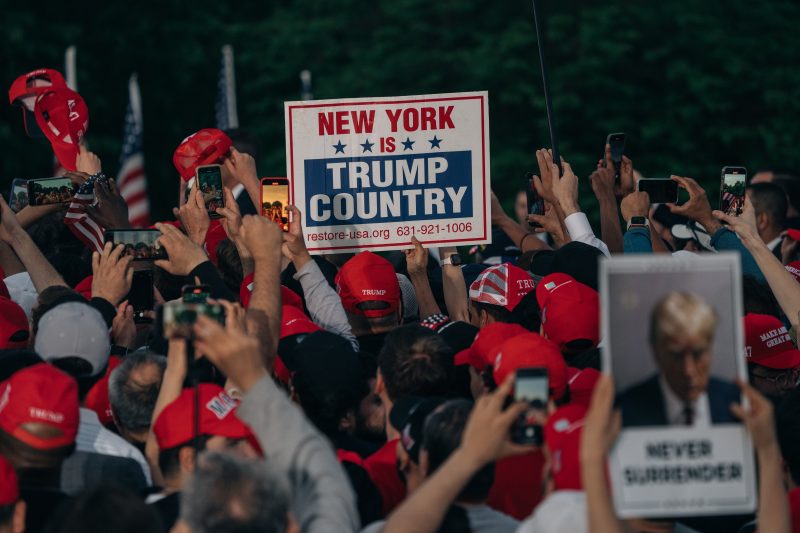Donald Trump will reportedly hold his second New York City rally of the campaign cycle later this month, welcoming supporters to Madison Square Garden in the heart of Manhattan. It’s an odd tactical choice, given the city’s overwhelming support for Democratic candidates. It also immediately evoked historical comparisons that were not particularly flattering to the former president.
Perhaps Trump recognizes that he won’t have many more opportunities to headline at the most famous arena in the city where he was born. Maybe his campaign sees some electoral benefit from such an event that escapes the attention of, well, everyone else. Or maybe the campaign recognizes that it’s already been investing heavily in the New York City media market, if unintentionally, so it might as well double down.
Viewers in the metropolitan area have noticed that they’re seeing a surprising number of television ads centered on the presidential campaign, given that New York is almost certainly going to give its electoral votes to Vice President Kamala Harris (despite Trump’s third-straight prediction of victory in the state). But there’s a simple reason for that. New York City is relatively close to Pennsylvania, and the campaigns are desperate to get their messages to Pennsylvania voters.
Remember that there are seven states generally considered to be in play next month. We may be wrong; these states may not be very close or other states may be closer, but for illustrative purposes it’s useful to keep these states in mind.
As you’re similarly aware, the populations of those states — and, by extension, the votes that they tally — are unevenly distributed. In Pennsylvania, for example, voters are heavily clustered in and around Pittsburgh and Philadelphia. Often, we consider vote totals by county. The map below shows precisely that: votes cast by county in 2020 (with more votes indicated with larger circles) and the candidate who earned more of those votes (Trump in red, Joe Biden in blue).
Media markets, unlike the electoral college, are utterly indifferent to state lines. If you live in New Jersey but historically received television signals from strong transmitters in New York City, you are lumped into the New York market. These ad hoc but formalized clusterings of county groups are referred to as designated market areas (DMAs). And DMAs go where the customers are, not where voters have similar ballots.
What this means is that there are a lot of places outside of swing states that share media markets with swing-state voters. What that means is that a lot of voters outside of the swing states get hammered with ads intended for the subset of viewers who are in those states.
You can see an approximation of that media-market spillover on the map below.
Before we go further, it’s worth noting that this effect only applies to specific types of advertising. In the modern era of political advertising, it’s possible to narrowly target people by geography, demography and interest in a way that throwing an ad on the broadcast of a traditional television couldn’t. That said, putting ads on broadcast television is often an effective and affordable way of reaching a lot of those voters.
That’s particularly true given that live sports — one of the few television offerings that still offers both large audiences and attentive viewers who aren’t skipping ads — are often carried on broadcast networks. Put an ad in an NFL game and a lot of people will see it, even if some of them live in states your campaign is already certain to win or certain to lose.
There are a number of heavily populated areas that share non-swing-state media markets with swing states. Los Angeles. Minneapolis. New York City. Jacksonville. Salt Lake City. Voters in those places can expect to see campaign ads even if their minds are already made up.
From the standpoint of a political campaign, this is admittedly not ideal. They only have so much money, and they have so many people they really want to contact. Wasting money on some hardcore Manhattan Democrat who happens to be watching the New England Patriots play is just that, a waste. But if showing them that ad convinces two Pennsylvania moderates? The return on investment might be worth it.
Just as it might be worth it if a rally in the middle of Manhattan triggers protests and brawls that reinforce your campaign message of tumult and insecurity. Political calculus can be more complicated than it at first seems.





























